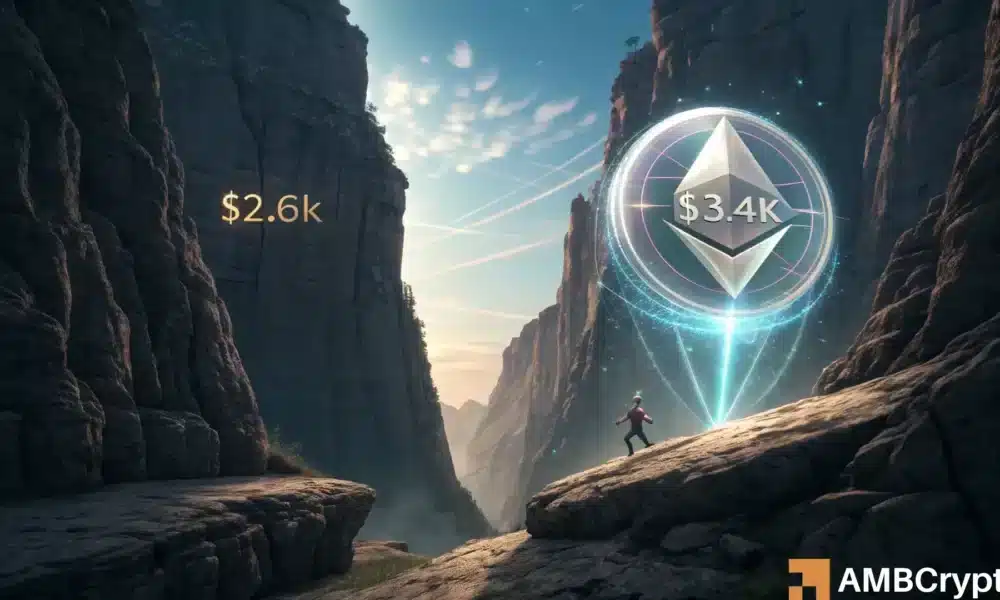Key Price Levels for Ethereum Traders: An In-Depth Analysis
As Ethereum (ETH) continues to navigate the volatile world of cryptocurrency, traders and investors must remain vigilant of key price levels that can influence market direction. Understanding these crucial zones can help in making informed decisions. Currently, the $3.4k-$3.6k supply zone and the $2.6k demand zone are critical pivots that could determine the long-term trend of Ethereum’s price action.
The Current Market Context
On November 21st, Ethereum experienced a significant drop to $2.6k, but in recent trading sessions, it bounced back by 12.2%, reaching approximately $2,944. This rally originated from a long-term demand zone identified since June, signifying that buyers are still interested at lower price points. Supporting this positive sentiment, Bitmine Immersion (BMNR), the largest holder of Ethereum, announced that it reached 60% of its goal to accumulate 3.63 million ETH, which accounts for nearly 3% of Ethereum’s total supply.
The potential for a rebound has attracted attention among traders, particularly with recent whale activity indicating robust buying interest at lower levels. However, the market remains complex, with contrasting signs of bullish and bearish sentiment shaping price action.
The Rounding Top Pattern
As traders analyze market sentiment, the emerging rounding top pattern signals a potential shift in control toward sellers. While this pattern reflects bearish tendencies, it also presents an opportunity for bullish resurgence if Ethereum can breach the critical $3.4k level. Despite the dominant seller pressure, the bulls must defend the $2.5k area, a critical support zone that has the potential to pivot market direction.
Technical analysis indicates that a move beyond the established $3.4k-$3.6k resistance zone could serve as a trigger for aggressive traders. Until that occurs, the likelihood of a breakout remains uncertain, necessitating that investors remain adaptable to potential market movements.
Liquidation Pressure in the Market
Additionally, the 6-month Liquidation Heatmap has shown significant liquidation zones, particularly around the $3k level. This suggests that there are still selling pressures lurking beneath the surface, especially with the next psychological support lying at the $2k mark. If Ethereum is subjected to further selling pressure, it could be compelled to test these lower levels again.
The pivotal support between $2.6k-$2.7k is essential to monitor, as dropping below this range could lead to a decline toward $2k or even lower. Traders should remain prepared for potential liquidation spikes as buyer exhaustion mounts and sentiment shifts, making this zone a key focal point in the upcoming trading sessions.
The Road Ahead: Bullish or Bearish?
As we assess the market’s trajectory, it’s vital to recognize the delicate balance between bullish potential and bearish resistance. The price action indicates a relief bounce; however, a full recovery remains elusive without a sustained shift in market sentiment. Should Ethereum break above the $3.4k resistance, we could see a renewed interest from buyers leading to more favorable outcomes.
Conversely, if the bears continue to dominate the market, further declines may be probable. The coexistence of liquidation pressures and key demand zones creates a climate of heightened risk for traders. In such a situation, staying informed on market dynamics becomes crucial for anyone looking to capitalize on the fluctuations inherent in cryptocurrency investments.
Conclusion: Strategic Positioning is Key
In the rapidly changing landscape of Ethereum trading, understanding key price levels is paramount for success. The $3.4k-$3.6k supply zone and the $2.6k demand zone will play pivotal roles in determining the future direction of Ethereum’s price action. While a bullish resurgence is possible, traders must remain cognizant of the surrounding bearish pressures and liquidity zones that could impact their strategies.
In the end, the market remains unpredictable. As we’ve seen with recent price movements and significant player actions, an eye on key levels of support and resistance can provide traders with much-needed insights in making informed decisions.
Disclaimer: The information in this article does not constitute financial or investment advice and should not be interpreted as such. Always conduct thorough research and consider professional guidance when trading.
















